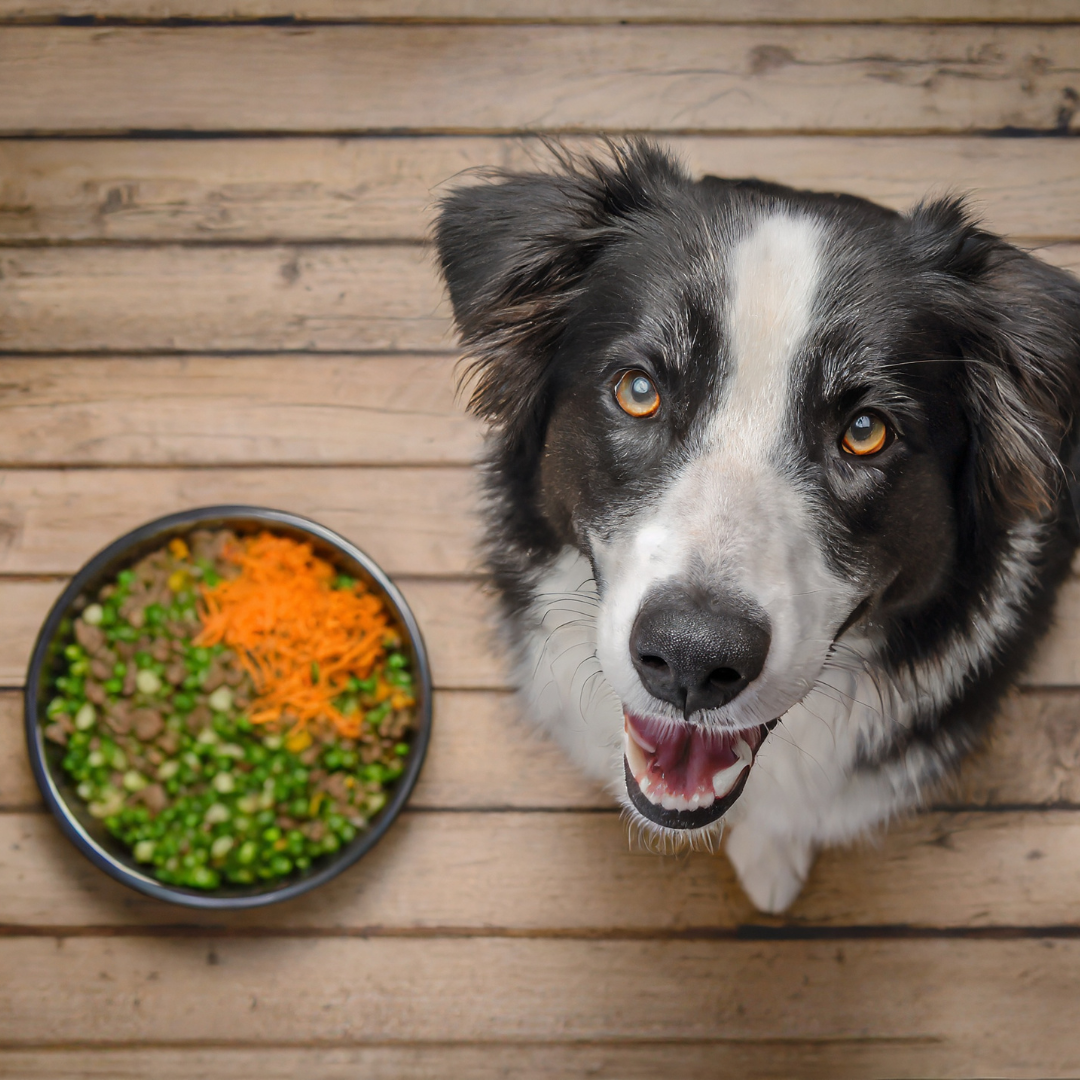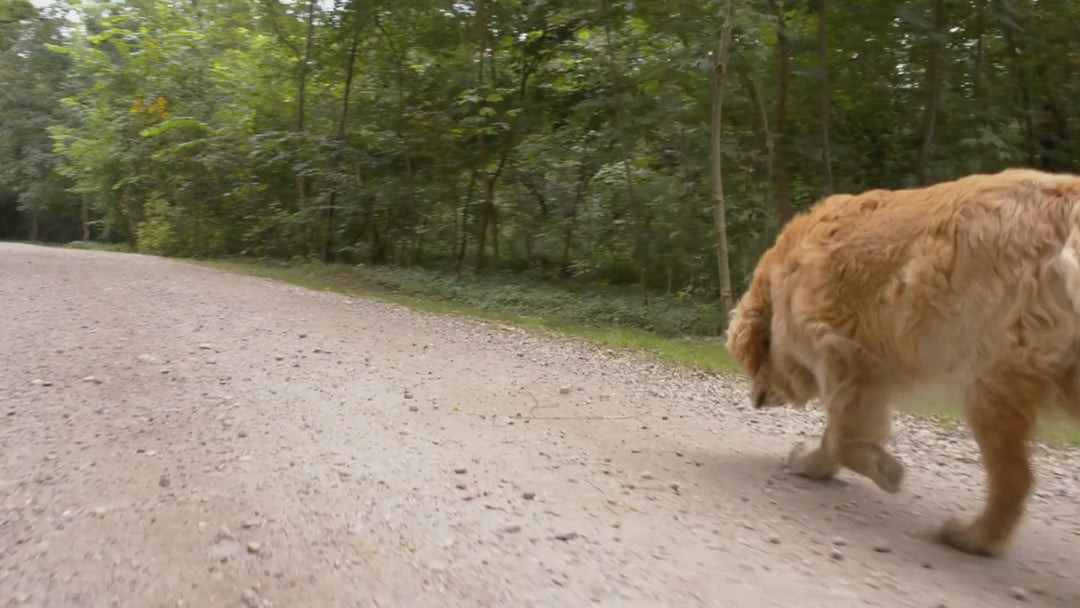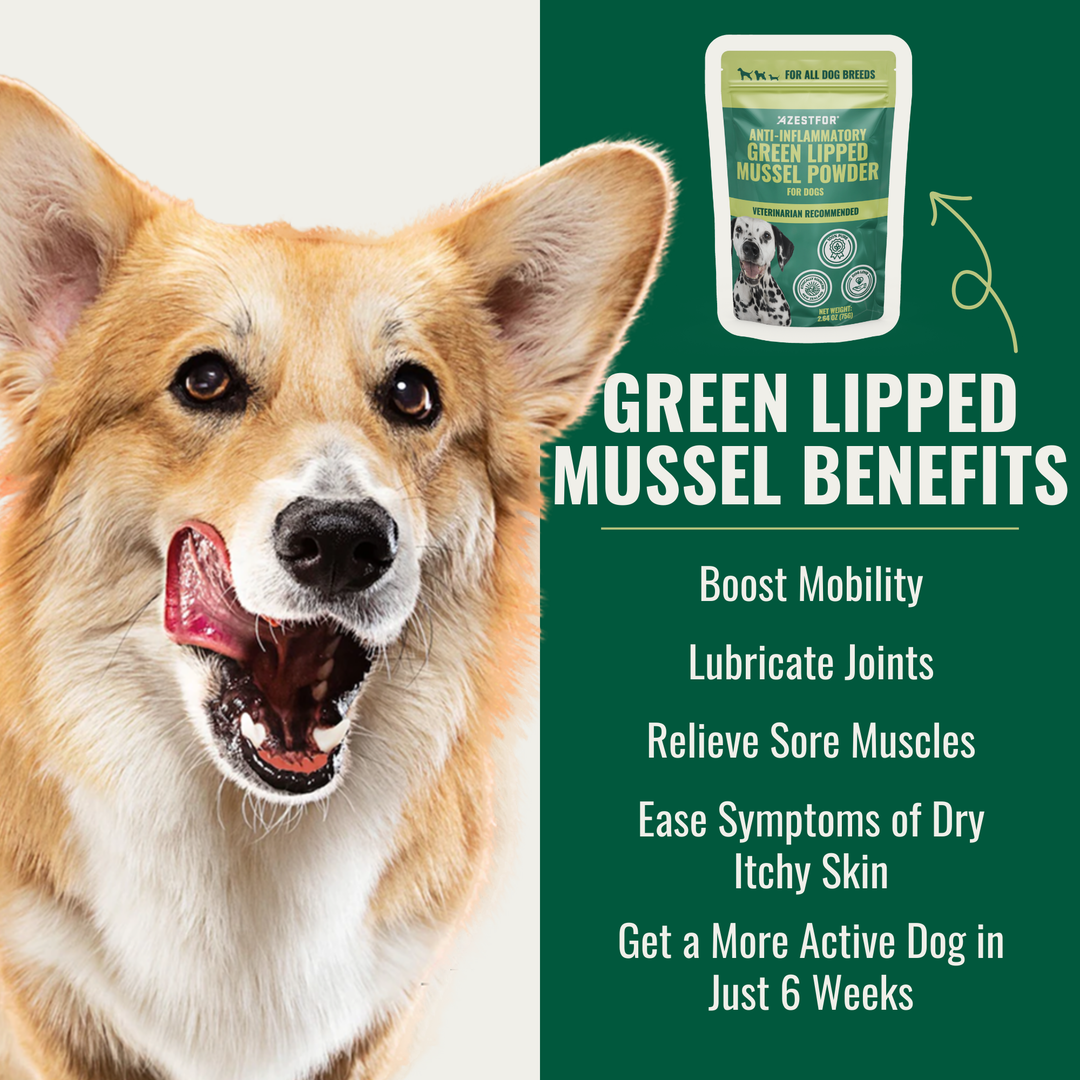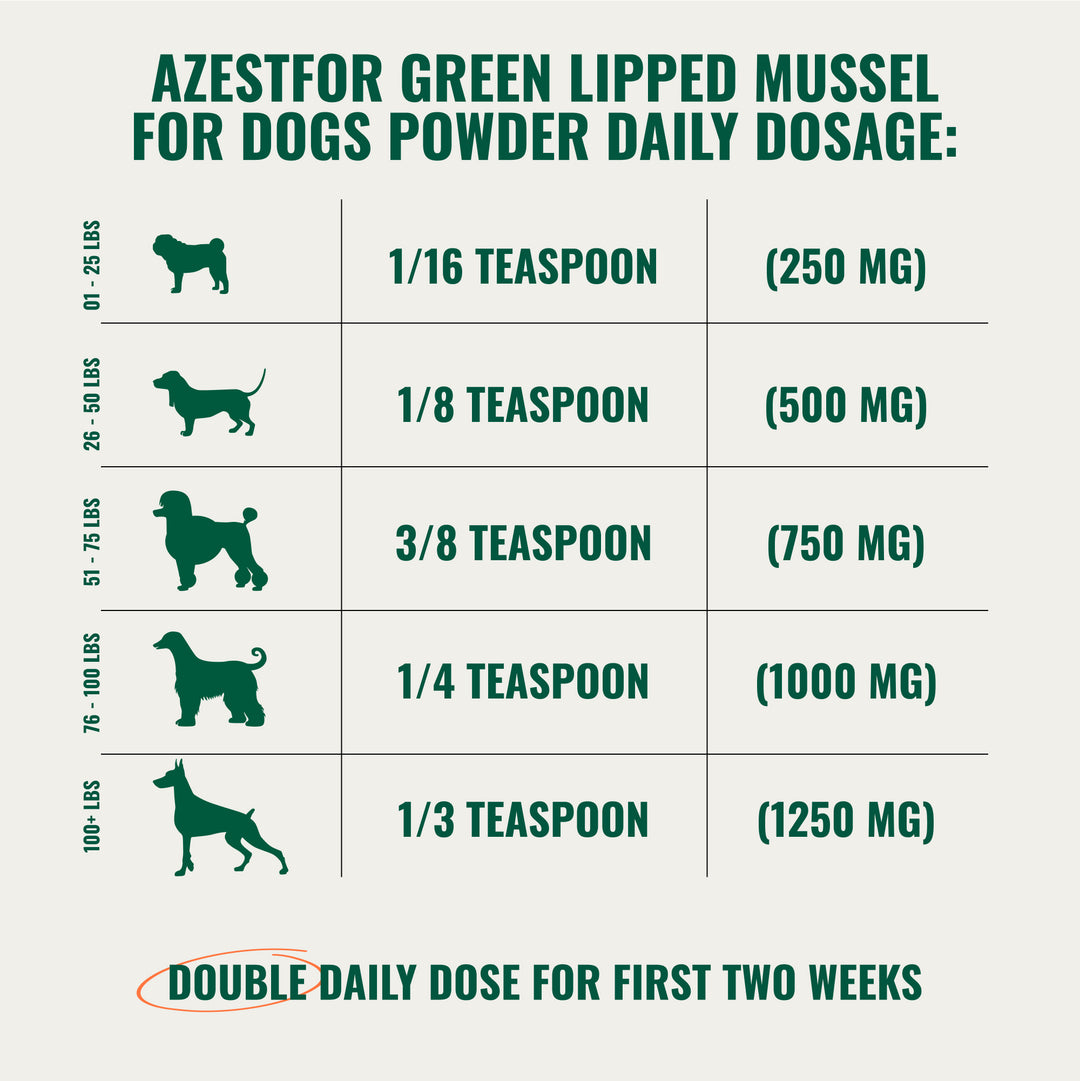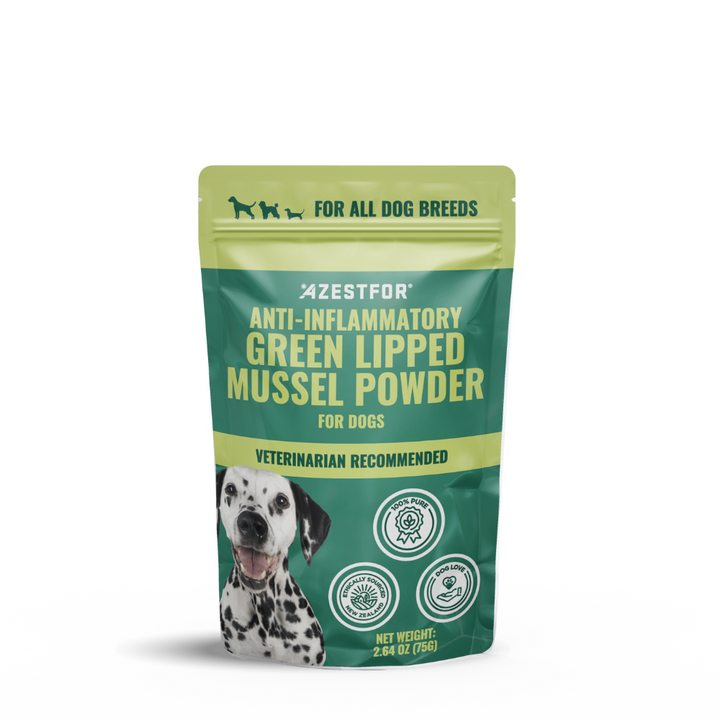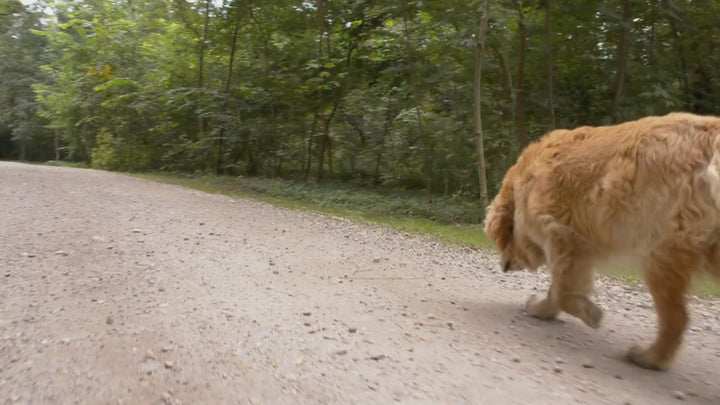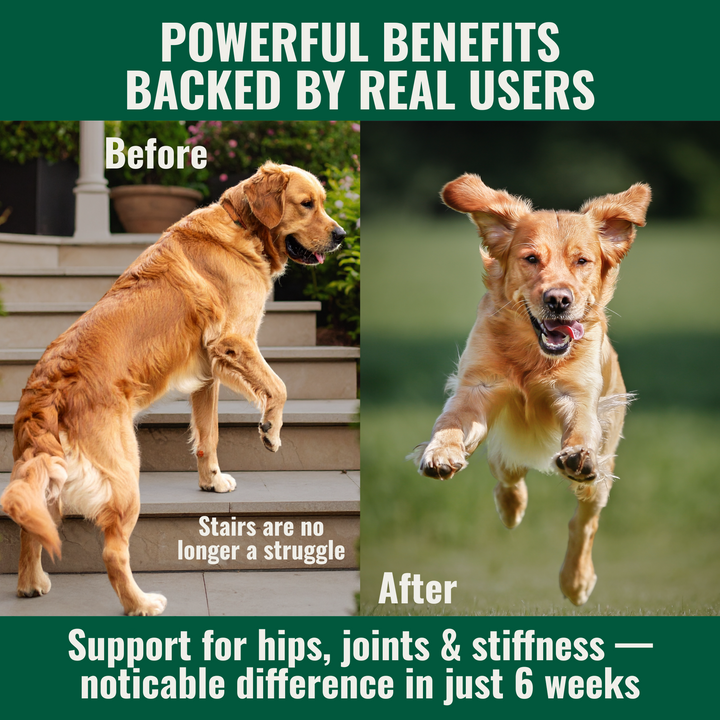The Supplement that is Giving Dogs with Dementia a Fighting Chance!
Does Your Dog Suffer with Dementia? What if You Could Reverse Your Dog's Cognitive Decline, Would You...?
Do Dogs Experience Dementia?
Absolutely. Just like us, our loyal canine companions grow older, and with age, they can face a condition known as dog dementia. In the world of dogs, we often refer to it as cognitive dysfunction syndrome or canine cognitive dementia. Canine cognitive dysfunction describes the mental and behavioral changes that come with aging and are linked to alterations in their brains.
It's somewhat similar to Alzheimer's disease in humans, though not identical. In humans, Alzheimer's brings permanent and irreversible brain damage. However, in dogs, there's more hope. The behavioral signs of dementia can be temporarily reversed, and the disease's progression can be slowed down.
Cognitive dysfunction in dogs arises from age-related changes in the brain, like a decline in neurons, reduced blood flow to the brain, or the buildup of neurotoxic substances. These changes lead to your dog becoming less responsive to stimuli and having a harder time learning and remembering things.

At what age do the first signs of dog dementia usually appear?
The initial signs of dog dementia typically start to show in older dogs, often around the age of 7 or older, but it can vary among individual dogs. Keep an eye out for changes in behavior, memory issues, or altered interactions as your dog ages. If you notice any concerning signs, consult your veterinarian for guidance and support.

What are the Signs of Dementia in Dogs?
In the early stages of dementia, the signs are often non-specific and are hard to attribute to any specific cause. You can notice the early signs when your dog starts acting differently.
How do Dogs Act When They First Get Dementia?
Some indicators of dementia in dog may look like:
- A decrease in energy and activity levels
- Reduced social interaction
- Loss of interest in play
- Mild disturbance of sleep pattern
- Mild increases in fear and anxiety
- A loss of appetite

What Happens When a Dog has Advanced Dementia?
As your furry friend's dementia advances, you might start noticing these changes:
- Watch for shifts in your dog's unique personality.
- Ever seen your dog just staring into space? That's a sign of confusion.
- Forgetfulness about where to do their business or not following your commands.
- Changes in their emotional well-being – more anxiety or perhaps a bit down.
- Memory troubles, repetitive actions, and learning new things become a bit tougher.
- Does your pup ask for attention or food non-stop? They might be doing it repeatedly.
- Teaching them new tricks like potty training feels like starting from scratch.
- Their senses may get a little wonky – trouble recognizing their surroundings or potential issues with seeing or hearing.
Just like your furry companion, we're here to make things simple and understandable.
Caring for Dogs with Advanced Dementia
A Holistic and Alternative Care for Dementia in Dogs
Activity feeding — done by simply scattering dried food or freshly cooked bone for the pet to find. By doing nose-work exercises, your dog is having some olfactory stimulation, which may be one form of cognitive stimulation for your senior pet.

3 Cognitive Exercises to Practice with Dogs with Dementia
Walking your dog — gives your dogs a chance to sniff around and meet other dogs and people. Social interaction and exposure to new stimuli is important for keeping your dog’s cognitive skills sharp. If your dog has arthritis and has difficulty walking, using pet strollers is an option. She may not be getting aerobic exercise by using a stroller but she is using muscles involved in balance and attentiveness.

Swimming — a good way to improve strength and stamina in older dogs that have become sedentary and unfit. Fitter animals can also enjoy more vigorous play and social contact with less risk of pain.
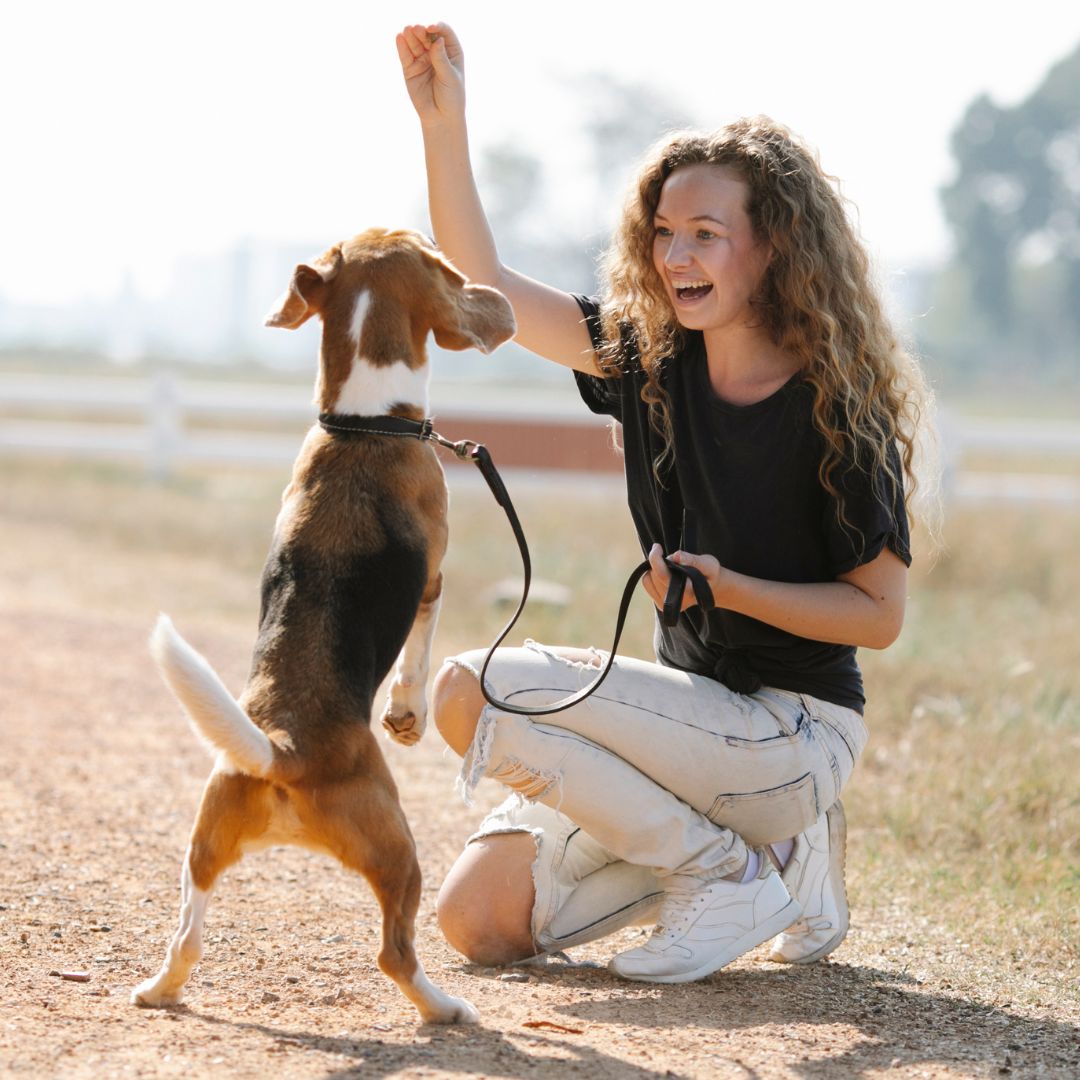
Basic obedience or clicker work or working to teach new or maintain old tricks for 5 minutes 3-4 times per day. Some of the training can be incorporated into daily life (e.g. if getting up the table, you can ask the dog to come with you and sit or wait and offer a paw).

Roll (instead of throwing) balls and Frisbees for your dog to chase and/or retrieve. You can also try rolling food toys, and puzzles. This will serve to enhance and maintain eye-paw coordination and because the toys/puzzles make noise, even dogs that are losing their sight and hearing acuity can benefit.
7 Best Practices aka Tips for Around the House For Dogs with Cognitive Dysfunction Syndrome (CDS)
Aged Dogs with dementia have problems locating and getting to the resources they need. You, as the owner, have to make some simple changes in the house to suit the need of your sick and aging pet:
- Provide additional water bowls close to your dog’s resting areas
- Provide additional resting sites
- Provide steps or ramps for your dog to easily get on and off furniture
- Use mats or rugs that have traction to help the dogs get more exercise and have fewer elimination accidents
- If your pet has problems with his/her vision, it might be helpful to put some carpets and rugs that will help your dog identify central floor spaces and corridors without bumping into things, place a quiet radio in different rooms close to his/her resources to help the dog identify the location, put different scents to help the dog identify specific rooms
- Provide a properly designed bed area, with a well-padded wrap-around basket that is near the night light and place your recently worn clothing to help an anxious or confused pet
- Protect the pet from accidents (e.g. falling into the swimming pool, falling down stairs).
How Does Food Quality Help in Preventing or Delaying Dementia?
It has been shown that specialized diets rich in antioxidants can slow down the progression of cognitive dysfunction, improve behavioural function and may have a protective effect [3, 4].A study showed feeding aged dogs with an antioxidant fortified diet (daily dose: 21 mg/kg/day Vitamin E, 1.6 mg/kg/day Vitamin C, 5.2 mg/kg/day Carnitine, 2.6 mg/kg/day lipoic acid w/ fruits and vegetables equivalent to 5-6 servings/day) resulted in a slowing of the rate of decline in cognitive abilities.
Furthermore, if the feeding of the antioxidant fortified food is started at a young age (2-4 years), this will result in significant improvement on a visual discrimination task compared to dogs of the same age that were fed with nonfortified food over the same time period.
This finding means that feeding foods that are fortified with antioxidants at an early age will delay the onset of cognitive decline in dogs.[6]
Dietary Treatment for Dogs with Dementia
Dietary treatment for dogs with cognitive dysfunction is available. A commercially available diet formulated for senior dogs (Hills Prescription Diet d/b) has been shown to improve memory, learning ability and clinical signs of cognitive dysfunction [9,3]. The diet is supplemented with antioxidants Vitamins E and C, selenium, beta carotene, and flavonoids and carotenoids, omega-3 fatty acids EPA and DHA. [9]Another diet shown to improve cognitive ability available in the market (Purina One SmartBlend Vibrant Maturity 7+ Formula) contains MCTs (medium-chain triglycerides). When fed to the aged beagles for 8 months, the dogs fed with the said diet scored significantly better on several types of cognitive tasks than did the control group. [1] The best time to implement dietary or supplement intervention is before the dog shows any signs of brain aging (4-5 yrs old for large dogs, 5-8 yrs old for medium dogs, no later than 8-10 years for small dogs). [7]
Any Supplementation that Helps?
Dietary supplements can help delay the onset and slow down the progress of cognitive decline in dogs.
These include:
Poly unsaturated fatty acids (PUFAs), especially arachidonic acid (ARA), docosahexanoic acid (DHA) and eicosahexanoic acid (EHA).
PUFAs play a role in maintaining the integrity of neurons and enhancing energy use by neurons. [7]
Dietary Treatment for Dogs with Dementia
Omega-3 fatty acids
Omega-3 fatty acids can be obtained from fish oil, particularly from cold-water fish such as herrings, sardines, and mackerel [5,9]. Fish oil is the best source of usable omega-3 fatty acids, EPA (eicosapentaenoic acid) and DHA (docosahexaenoic acid) [9]. Recommended dose for dogs is 100-150 mg EPA and DHA combined per 10 lbs of body weight [3].
Azestfor Anti-Inflammatory Green Lipped Mussel for dogs is naturally rich in Omega 3 fatty acids.
Phosphatidylcholine (Choline)
Important for memory, intelligence and mood, posphatidylcholine is useful for cognitive disorders in dogs [2]. Choline is found in egg yolk, liver bran, wheat germ, soybeans, cauliflower, lettuce, and nutritional yeast [5]. In dogs, the recommended dose for cognitive disorders is 20-40 mg/animal given every 12-24 hours or at 10-15 mg/0.45 kg body weight every 24 hours [9].
Vitamin C
Vitamin C or Ascorbic acid is a powerful antioxidant and free radical scavenger. Natural sources if Vitamin C include fruits, vegetables, and organ meats. Vitamin C is sensitive to oxidative processes so the Vitamin C content of most foods decreases dramatically during storage and processing. Vitamin C can easily loss its activity if exposed to heat, light, alkalis, oxidative enzymes and minerals copper and iron [11]. Long-term dosages for Vitamin C are 50-125 mg twice daily for small dogs; 125-250 mg twice daily for medium-sized dogs; 250-500 mg twice daily for large dogs [5].
Vitamin E
Good sources for Vitamin E include cold pressed vegetable oils, nuts, seeds, green leafy vegetables, eggs, most fish and meats such as beef, duck, turkey leg, and chicken breast. Dose for dogs is 7 7.5 mg alpha tocopherol per 1,000 kcal/ME daily. [3]
Selenium
Fish, meat and eggs are good sources of selenium. Dose is at 87.5 µg (mcg) per 1,000 kcal.ME daily [3]. Selenium is a powerful antioxidant that works with Vitamin E to lengthen cell life, thus helping fight degenerative diseases. Dose for small dogs is 5-10 mcg daily; medium-sized dogs- 10-20 mcg daily; large dogs- 20-50 mcg daily. [5]
Flavonoids
Flavonoids (e.g. quercitin) functions like Vitamin C. Quercetin is a natural antioxidant bioflavonoid found in red wine, grapefruit, onions, apples, black tea, and in lesser amounts, in green leafy vegetables and beans. Suggested dosage (general use) of bioflavonoid complex in pets is 200 to 1,500 mg per day, divided into 2-3 doses. [8]
Carotenoids
Carotenoids (beta carotene, alpha-carotene, lutein, lycopene, betacryptoxanin, zeaxanthin, canxanthin, and astaxanthin) are found in orange and green vegetables, and highly pigmented fruits [11]. Sources of beta-carotene include sweet potatoes, carrots and pumpkins [3]. Lycopene is found in cooked tomatoes, watermelon, and other red foods [2]. Carotenoids act as an antioxidant and they protect cell membranes by stabilizing oxygen free radicals produced [11]. AAFCO-recommended nutritional daily dose of Vitamin A in dogs is 100 to 200 IU/kg/day [8].
Lipoic acid and L-carnitine
Lipoic acid and L-carnitine are mitochondrial factors that may enhance the function of aged mitochondrion by restoring the efficiency of the mitochondria and reducing oxidative damage to RNA [7]. Both have been found to benefit animals with behavioural changes caused by senility. [5]Dietary sources of L-carnitine include meat and dairy products. Lipoic acid-rich animal tissues (in the form of lipoyllysine; bound to lysine) include kidney, heart, and liver. Plant sources for lipoic acid include spinach, broccoli, and tomatoes. It can also be found in lower amounts in peas, Brussel sprouts and rice bran.[1]Recommended dose of L-carnitine for small dogs is 20-150 mg/kg, 3x daily; medium sized dogs-1 gram every 8-12 hours; and large dogs- 2 g every 8-12 hours [5]. Suggested dose for lipoic acid is 1-5 mg/kg body weight [5]. A study incorporating antioxidants and mitochondrial cofactors into the diet of adult dogs at a dose of 5.2 mg/kg/day of carnitine and 2.6 mg/kg/day lipoic acid has resulted in an improvement in learning ability of the aged dogs. [7]
Medium chain triglycerides
Natural sources of MCTs include milk fat and coconut and palm kernel oils. MCTs consist 7% of the total fatty acids in milk fat. MCTs are more abundant in coconut and palm kernel oils, with about half of each of these oils comprised of C12 fatty acid [6]. A study in beagles 9-11 years of age, supplementing MCT at a dosage of 2g/kg/day resulted in an improvement in brain energy metabolism and decrease amyloid precursor protein levels in old dogs [10].
References
- Anderson, Eileen. Remember Me?: Loving And Caring For A Dog With Canine Cognitive Dysfunction. Dogwise Publishing, 2016.
- Bowen, Jon and Heath, Sarah. Behaviour Problems in Small Animals: Practical Advice for the Veterinary Team. Elsevier Health Sciences, 2005.
- Cote, Etienne. Clinical Veterinary Advisor: Dogs and Cats. Elsevier Health Sciences, 2014.
- Ettinger, Stephen J and Feldman, Edward C. Textbook of Internal Veterinary Medicine, 7th ed. Elsevier Health Sciences, 2009.
- Landsberg, Gary M.; Hunthausen, Wayne L.; Ackerman , Lowell J. Behavior Problems of the Dog and Cat3: Behavior Problems of the Dog and Cat. Elsevier Health Sciences, 2012.
- Maldeker, Lester and Peter Vajdovich. Studies in veterinary medicine. Springer Science & Business Media, 2011.
- Overall, Karen. Manual of Clinical Behavioral Medicine for Dogs and Cats. ElsevierHealth Sciences, 2013.
- Shaw, Julie and Martin, Debbie. Canine and Feline Behavior for Veterinary Technicians and Nurses. John Wiley & Sons, 2014.
- Tilley, Larry Patrick and Smith, Francis W.K. The 5-minute Veterinary Consult-Canine and Feline, 3rd edition. Lippincott Williams & Wilkins, 2004.
- Augustin, Albert J. Nutrition and the Eye: Basic and Clinical Research. Karger Medical and Scientific Publishers, 2005.
- Brown, Steve. Unlocking the Canine Ancestral Diet: Healthier Dog Food the ABC Way. Dogwise Publishing, 2009.
- Dodds, Jean and Laverdure, Diana. Canine Nutrigenomics: The New Science of Feeding Your Dog For Optimum Health. Dogwise Publishing, 2014.
- Ensminger, Marion Eugene and Ensminger, Audrey H. Foods & Nutrition Encyclopedia, Two Volume Set. CRC Press, 1993.
- Fougère, Barbara. The Pet Lover's Guide to Natural Healing for Cats & Dogs. Elsevier Health Sciences, 2006.
- Kamel, B.S. Technological Advances in Improved and Alternative Sources of Lipids. Springer Science & Business Media, 2012.
- Mandelker, Lester and Vajdovich, Peter. Studies on Veterinary Medicine. Springer Science & Business Media, 2011.
- Messonnier, Shawn. Natural Health Bible for Dogs & Cats: You’re A-Z guide to over 200 conditions, Herbs, Vitamins, and Supplements. Crown/Archetype, 2010.
- Messonnier, Shawn. Nutritional Supplements for the Veterinary Practice: A Pocket Guide. American Animal Hosp Assoc, 2014.
- Overall, Karen. Manual of Clinical Behavioral Medicine for Dogs and Cats. ElsevierHealth Sciences, 2013.




